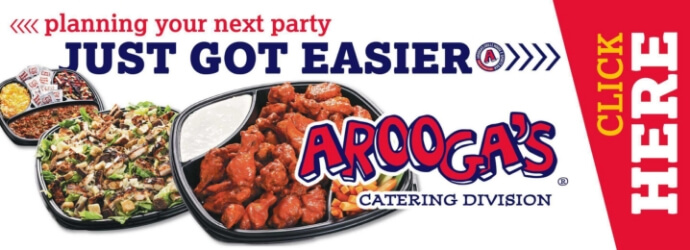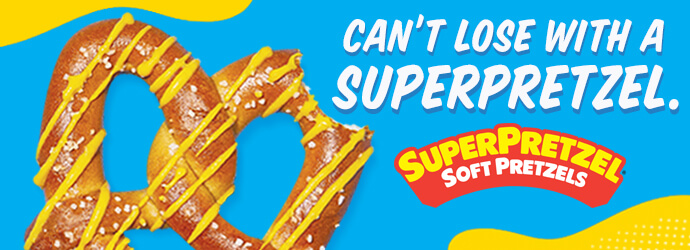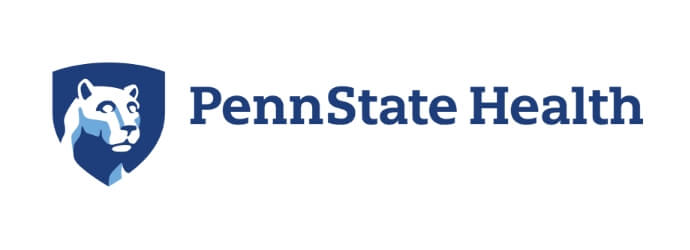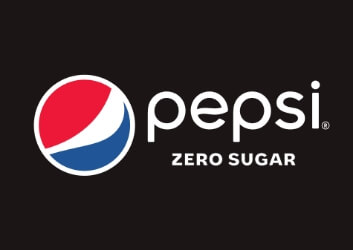June 16, 2009
As seen in the game program
Jeff Fishbein, BEARS Staff Writer
Itâ™s 9 AM on Saturday, November 1. Outside
Giant Center, the parking lots are full of school buses and vans, while nearly 1,000 high school athletes are preparing for four races at the nearby Parkview Course, the state championships in cross country.
Inside the arena, one man is already preparing for another sporting event â" one that will not begin for another 10 hours.
Aaron Henry â" just call him Hank â" heads up Great Save Productions, the division of
Hershey Entertainment & Resorts Company responsible for everything you see on a video screen inside
Giant Center, along with the Marquis in front of the arena, several signs in
Hersheypark and other video displays on company properties.
Despite the fact that the puck will not hit the ice until just after 7 PM â" 7:02, if Hankâ™s script is followed to the letter â" he is already preparing for the show that is a
Hershey Bears hockey game. Fans may not think about it, but there is so much more than hockey in the roughly two-and-a-half hour presentation that is an American Hockey League contest.
And the hockey is the only part of the show over which Hank and his crew have no control.
Early in the morning, his tasks are relatively mundane â" the script itself, a lengthy document that includes every announcement, every cue, every break and all the contests that happen during the game and intermissions, is the first priority for the day. Also, assembling the images and clips â" audio and video â" that will appear on the big screen that hangs over center ice is a task completed early in the day.
There are little errands, things the fans donâ™t have any idea are part of Hankâ™s job â" for instance, one of the things he has to do is prepare several blank DVDs so that recordings of the game can be provided to the teams and the officials. He has to test the video feed for Neulion, the company that provides Internet web casting of all AHL games this season.
Before most people are eating lunch, Hank is joined by Dan Suereth, who, like Hank, has been in this crew since
Giant Center opened. In fact, as Suereth explains, it was created at the same time as the AHLâ™s premier facility. âIt was a new department when it was created back in 2002, and itâ™s still being redefined. Every year, new things come about,â he explains. âThereâ™s a lot.â
Dan grew up not far from here, attending Annville-Cleona High School and then nearby Shippensburg University. He got to be a fan during Hersheyâ™s 1996-97 Calder Cup run, and was working at
Hersheypark when the new arena became the home of the Bears. He moved in with the team.
âWhen this building was built, we were told it was the best in the AHL. To my knowledge, it still is,â with the exception of teams playing in major league buildings, he said.
âItâ™s top of the line technology, especially when compared to some of the places like Syracuse, Rochester or Norfolk. I think this is the first year (the Admirals) even have a video board,â Suereth explained. âI went to Binghamton a couple years ago and it looks like they just have big screen TVs. I know for a fact no one has a video room the size we have, so we are very lucky.
âItâ™s not all glamour though, thatâ™s for sure. Itâ™s a lot of hours, a lot of behind the scenes work. A video that lasts three minutes probably took a week to a week and a half to edit. Itâ™s the stuff that nobody realizes.â
And thatâ™s true â" the fans see the end result of the work Great Save does, but not the amount of work involved in making it happen. A great example of that is the prep work for this game â" it was U.S. Army Strong and Hometown Heroes night, and the evening was capped by a special jersey auction. Hank wanted to display the jerseys with video footage rather than a still picture during in-game promotions for the auction, so he had to record the jerseys in the locker room prior to the playersâ™ arrival, combine that imagery with text and turn it into a commercial-length production that would be the backdrop to game announcer Don Scott.
And those little bits of video take time â" just imagine the demand for a full-length production, like the piece that opens each home game.
âI wish that we could do a new one every night,â Suereth says. âThe problem is there just isnâ™t enough time. Itâ™s only a crew of three of us.
âI go down to a Flyers game and itâ™s unbelievable what theyâ™re able to produce. It looks awesome, sounds awesome,â he continues. âI sometimes get even a little bit jealous about what theyâ™re able to do, but then I hear that there are six of them, and thatâ™s their only job. We have all the park stuff to do, all the other stuff. Itâ™s not as easy as we would like it to be.â
And not just the park stuff, he adds. In fact, not all the work this trio performs is for Hershey itself â" they take care of many of the video and production needs of
Giant Center performers who are there for just a night, or perhaps a few.
âA lot of the shows that come in here, we donâ™t necessarily produce anything for them, but we usually have to assist in making sure their signal gets out to the rest of the arena so they can patch into our system. Some of the events we actually do a full show,â Suereth explains, such as the Assemblies of God, which meets at
Giant Center each spring and relies heavily on Great Save during the conclave.
âWe help with the web site,â doing graphics and contributing other elements, he said. âAnd then a lot of park-related things. We do training videos. We do a lot for the diversity committee. We do some stuff with the lodge, with the hotel.â
Later in the afternoon, Ross Thane checks in. Thane is the third and newest member of the team, hired when Lamont âPuckheadâ Buford took a position over the summer with the St. Louis Blues in the National Hockey League. Thane and Suereth, like Hank, hardly seek the spotlight. Although Hank is seen in one or two of the videos that air at
Giant Center, it was the Puckhead character, and Bufordâ™s flamboyant style, that have become the most popular among videos in the Great Save arsenal.
âI donâ™t think anyone will replace Lamont. But I hope that I can fit in just as well,â said Thane, whose coworkers jokingly call him the new Lamont this season.
âI donâ™t need to be seen, I donâ™t particularly even like to be seen. I just do my thing and stay in the background,â Suereth adds. âFor anyone that knows Lamont, heâ™s completely the opposite. If Lamont could have a million friends, heâ™d attempt to have them. Heâ™s very public, very outgoing. It takes the right kind of personality to be that person. Iâ™m just not that way.â
Does that mean Hank, Dan and the slightly more shy and quiet Ross are the geeky, nerdy type?
âI donâ™t know if thatâ™s the word Iâ™d use,â Suereth said. âSomeone that sees the room is in awe, because there are thousands of buttons down there. It looks like a very high-tech area. I was the same way when I walked in my first time. I was lost.
âBut you learn it, just like anything,â he said. âYou donâ™t have to be a nerd to be good at it. But itâ™s a different type of person, I think.â
Thane, a product of the Milton Hershey School who interned with Great Save as a high school senior, admitted that his impression of the job and what it entailed changed over time as he became more accustomed to the normalcy littered among the craziness.
âAs a high school student, to be working for a sports team, is pretty fun. Everything seemed very big at the time,â he recalled. But itâ™s not the same today.
âIâ™ve been doing this kind of work, video work, for seven years now, it doesnâ™t have that whole shock,â he said. âYou come in and you go to work. You do what you normally do, you go home and itâ™s over.â
And, Thane notes, the Great Save crew never hears the audience reaction to its work the way the players do to theirs. In fact, sometimes they might have to look at the scoreboard to see whatâ™s happening on the ice, since their job focuses so much on what happens off the ice.
âSometimes during the game Iâ™m sitting down here in the control room on the computer and Iâ™m kind of watching the game out of one eye while doing other things,â Thane said. âDanâ™s in the press box and he doesnâ™t even see the game sometimes.â
As game time approaches, the part-time workers who assist on game day, and the game-day interns â" who answer to Hank, because they are such an integral part of the off-ice production â" start preparing for the night. Because this is a special night, the pre-game and first-intermission timelines and scripts have to be modified â" the Army has provided a special film that will be on the big board before the traditional pregame video, and the night includes an awards presentation and special re-enlistment ceremony that are not part of a routine game presentation.
Of course, some of the routine is just that â" routine. There are always the same three cameras for the night, two on a platform above Section 120 (one for wide shots, one for close-ups) and another above Section 110, and setup for the camera crews begins roughly two hours before face off. The latter used to be a portable device, but it was decided to make it stationary to be less of an intrusion on fans.
What you see on the scoreboard is what the viewers of Neulionâ™s feed see; the AHLâ™s off-ice officials have their own camera, and may or may not use the video taken by Hankâ™s crew to make determinations as to scoring. The camera feeds also can be provided to use by local television stations for their late-night news programs â" one or two local stations may bring a camera to the game, but Great Save is happy to accommodate all of them by beaming footage in time for deadline.
Although the environment in the control room is fun and easygoing as the game approaches, the people there are meticulous to the last detail in preparing for the show, er, game. They have to assemble film clips, still pictures and music that will be used for contests and quizzes, fights, penalties and power plays â" basically, everything you see above the ice during interstitial moments that can last as little as a few seconds, up to a minute or two. It may seem like a short time, but the sequence for a Hershey goal alone includes five elements over a matter of less than half a minute â" the horn, the music (âSong 2â by Blur, in case you were wondering) the goal graphic, the Bears chant video and then the replay.
There also are things the crew doesnâ™t learn until the last minute at every game â" scratches, for example, and starters, who are named just minutes before they are announced to the crowd. In fact, one member of the team may be writing down the information for the announcer as he is reading something else to the crowd. The team may or may not have photos of the visiting players available, depending on whether that team submitted them to Leaguestat, which provides much of the data for AHL teams. The graphics are all prebuilt days in advance, although there may be holes to fill as the deadline approaches â" sometimes in game, as with the attendance figure for the night, which is given to Hankâ™s crew late in the second period, or even during the second intermission.
On this night, there was a back-and-forth communication throughout the pregame concerning a player from the visiting team who had been traded (If heâ™s not in the program, we donâ™t have to announce him as a scratch, Hank declares); similar last-minute conversations take place when a player is en route due to a call-up or return. For this game, the introduction of the Philadelphia Phantoms included a special recognition of their coach â" former Hershey bench boss John Paddock, who led the team to a championship 20 years earlier â" just one of the details that had to be ironed out before the announcement was made.
The intermissions, like the pregame, are timed down to the second. The clock is set to 18 minutes and is supposed to start when the last player is off the ice, although, as Hank notes, the clock operator often starts it sooner if someone is lagging â" a discussion with the official, for example. Because it takes almost exactly 10 minutes for two Zambonis to flood the rink, that leaves seven minutes for whatever is planned for that break â" an interview (player or youth player), a contest (trikes or sumos, for example) or a youth hockey game. Realistically, itâ™s only about six minutes until everyone needs to be off the surface so the rink rats can move in â" a late start means an early finish, because if the promotion runs long, it could cost the team a delay of game penalty.
On this night, script changes were made on the fly, but Don Scott let the fans know what he needed to. Although there was an extra video, the crew was able to stay on target, and this timed event was ready to go exactly when the script said it should. Looking every bit the television director, Hank had everything cued up and ready for every moment of the game â" the fan favorite, of course, being the scoring sequence.
That special intermission program? Well, it wasnâ™t quite perfect. But it began and ended when it needed to, and everything continued according to plan. For the fans, it was three hours of fun and excitement â" albeit in a loss to the in-state rival from across the Turnpike.
For Hank, Dan and Ross? Just another day at the office â" but one that makes your experience here that much better.


 vs
vs











